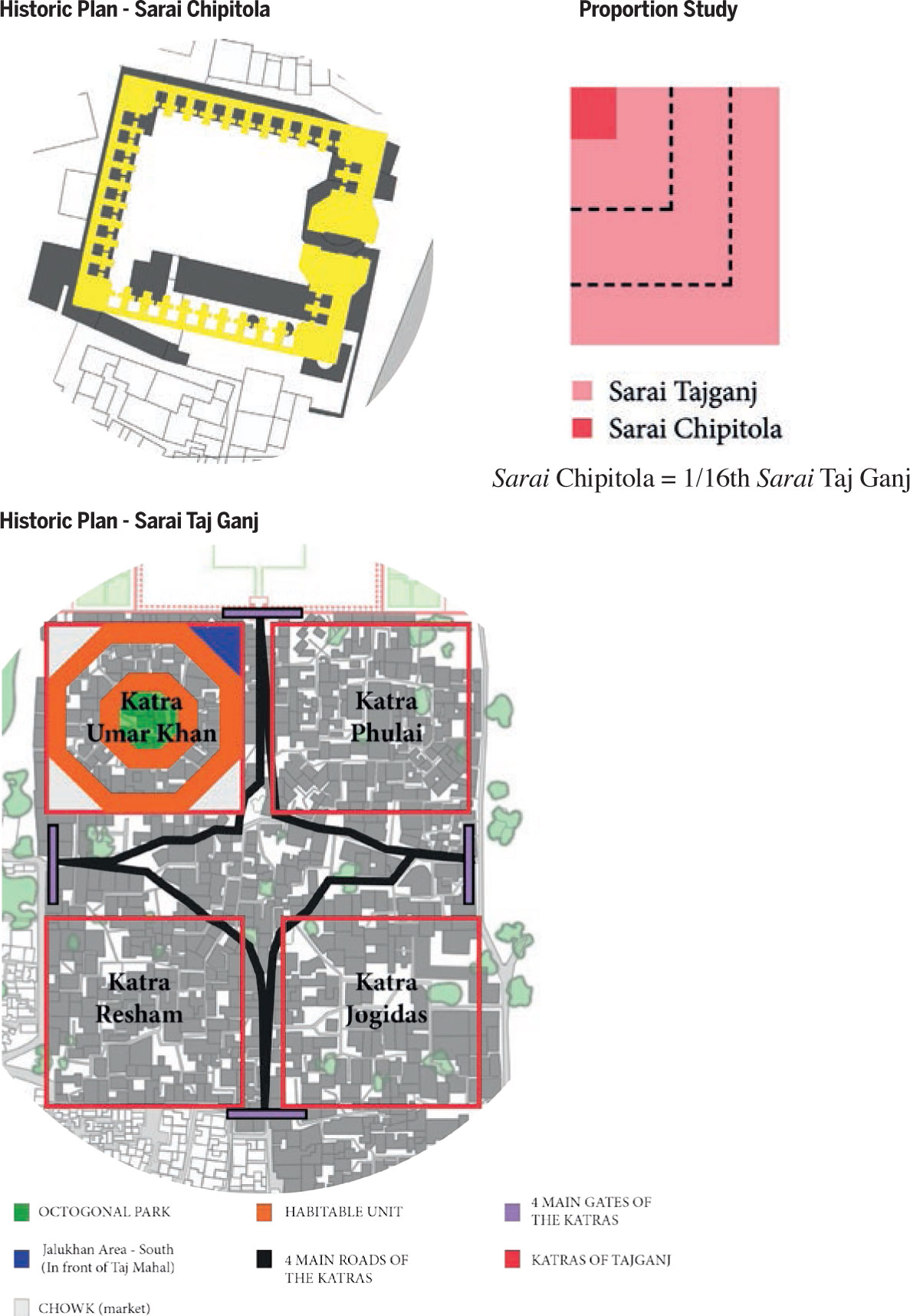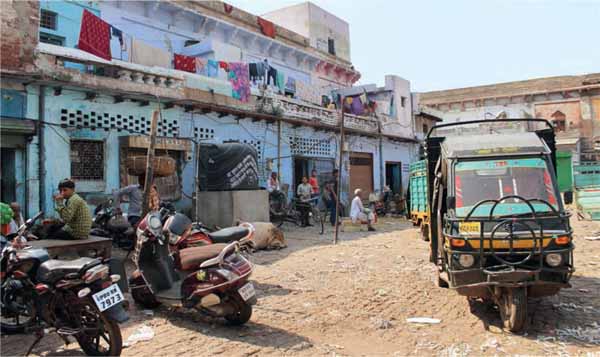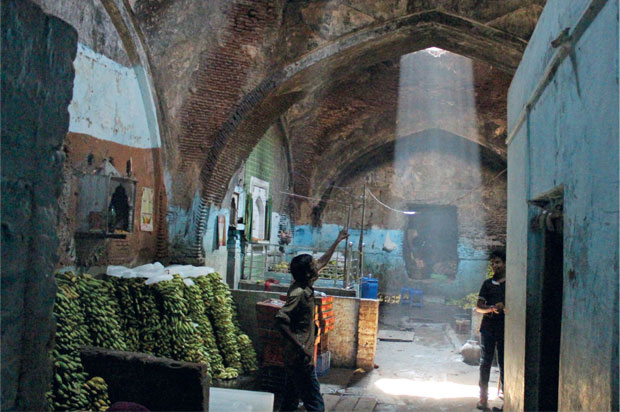Agra is home to one of the Seven Wonders of the World, the Taj Mahal, as well as the iconic symbol of the Mughal dynasty, The Agra Fort. But if we shift focus, it is also home to two other important historic structures — the sarais — located south of these monuments, hidden behind the canopy of roofs in the dense areas of Chipitola and Taj Ganj.
‘The sarai is an institution of resting places known as sattra, chavadi, dharmasala, caravan sarai and sarai for travelers, traders, pilgrims etc., on the travel routes and has been one of the important features of India. They not only provided shelter to travelers, but also played a very important role in the growth of the commerce of the Mughal Empire. It was Sher Shah Suri who is said to have initiated the building of sarais on a large scale on the routes basically for the needs of the state and partially for the needs of wayfarers. But his reign was short and it was during the Mughal period that the work of building sarais was carried out on an extensive scale. However, there was no uniformity in the structure and building materials.’ (Anjum, 2010)
Both sarai Chipitola and sarai Taj Ganj, situated near the Agra Fort and the Taj Mahal respectively, were located on the old trade route that went through Agra and were built as different typologies. The built form of sarai Chipitola suggests that it was a temporary sarai, built as a small square structure with chambers for animals on the ground floor and rooms for people to rest on the first floor with a central courtyard. Sarai Taj Ganj, however, was spread over a larger area with four divisions or katras. Each katra belonged to people from a particular profession. Sarai Taj Ganj with its colossal gates and well-planned katras with central gardens suggested a sense of establishment and hence was a permanent sarai.

Chronologically, the Agra Fort was built first during Akbar’s reign in 1573, which was followed by the construction of sarai Chipitola in 1620. During Shah Jahan’s reign, the Taj Mahal was built in 1648 and sarai Taj Ganj was established thereafter.
Historically, these structures played an important role in understanding the emergence of Agra as a city, however functionally, they play distinct roles. The monuments, home to the royal family (Agra Fort), were built to establish power and were edifices symbolising the supremacy of the Mughal dynasty. The vastness and grandeur of the Agra Fort suggests the widespread influence of the Mughal Dynasty during Akbar’s reign.



The expensive marble and detailed inlay work in semi-precious stones is evidence of the authority and riches of the dynasty during Shah Jahan’s reign. The sarais were functionally relevant to the common man as they provided either temporary shelter (sarai Chipitola) or permanent housing (sarai Taj Ganj). These roles remain intact till date.
Today, the monuments (Taj Mahal and Agra Fort) make up the static, permanent and formal part of the city, interacting in a very superficial manner with its visitors. On the other hand, the sarais are symbols of variability, transience and urban informality, engaging with its inhabitants. They are being used as storage units, parking areas and housing by the informal sector of the urban realm.
The migrant population in Agra has created an interesting relationship of engagement with the sarais by using these historic structures as safe houses. A role similar to the one it (the sarai) played roughly 400 years ago during the Mughal era. This engagement, constant transformation and appropriation of space has helped the sarais not only survive, but has made them a vital part of this continually evolving kinetic city.
“The city in our case (India) is not about the grand vision, but it is about grand adjustment.” (Mehrotra, 2010)
The concept of a kinetic city, as Prof. Rahul Mehrotra states, is the result of the rapid growth of Indian cities like Agra and the government’s constant struggle to keep up with this growth. What has emerged as a result of this is what Prof. Mehrotra categorically calls the ‘kinetic city’. This term seeks to give away the underlying binary connotation of the term ‘formal and informal’ with respect to the urban built fabric and seeks to capture the essence of impermanence and the rich nuances of the growing urban India. The city is kinetic in a manner that demands a shift in the perception of the planner and urges him/her to view the impermanence as an opportunity instead of a setback.
Indian planners need to enable the static to meet the needs of the variable that represent this continually evolving city. Sarai Chipitola is a prime example of how this is carried out under the purview of what is commonly known as ‘urban informality’. Migrant families and people categorised under the ‘informal sector’ have fulfilled their needs of habitat and storage by making small adjustments and expanding the margins of the city. In a nearly 400-year-old historic structure, the central courtyard is being used as space to park three-wheelers (auto-rickshaws), the ground floor as storage space for wholesale fruit vendors and the first floor by the migrant families for housing.
In India, finding a low-cost solution to any problem in an intelligent way is a culture commonly known as ‘jugaad’. (Financial Times, n.d.). It is important to note that it is a culture that took birth in the territory of informality.
Expanding cities like Agra are voicing an urgent need for the city planners and governments to visualise and create a flexible and elastic future for the built fabric instead of creating gigantic monoliths catering to only a part of the city’s growing inhabitants. The highly dense areas of sarai Taj Ganj and sarai Chipitola may be examples of pressing issues of poor hygiene, a non-existent waste management system and illegal encroachment, but they demand radical solutions that identify and recognise the grey areas between the black and white of formal and informal.
“In the age of global urbanisation, the slum becomes a site for reform, intervention and even aspiration.” (Roy)
The informal spaces are setting the ground for new laws of city planning. Therefore, instead of viewing them as a problem, they must be respected and recognised as spaces that have emerged out of a need: a need for housing, for equal opportunity and, above all, for sustenance.
The kinetic urban India does not draw clear lines between the formal and informal, rich and poor. Instead, it establishes a symbiotic relationship between the two. The wholesale vegetable vendor who stores bananas in sarai Chipitola is responsible for supplying fruit to the ‘formal’ areas of the city. The auto rickshaw driver who parks in the central courtyard of sarai Chipitola is dependent on the customers from the ‘formal’ sector to sustain himself and the ‘formal’ sector depends on him to move around the city.
A shift in perception and the spirit of collaboration is perhaps the need of the hour where we strive to create maximum impact through minimum intervention and retain a symbiotic relationship between sectors, the spirit of innovation and the culture of ‘jugaad’.
This article is the author’s extended research of an urban design study studio was conducted students by class 4A (class of 2017) of Sushant School of Art and Architecture, Gurgaon under the guidance of Prof. Vanicka Arora, Prof. Manas Murthy, Prof. Apurva Garg and Prof. Monisha
References
• Anjum, N. (2010). “SARAIS” IN MUGHAL INDIA. Proceedings of the Indian History Congress, 71, 358-364.
• Financial Times. (n.d.). Retrieved from Financial Times: http://lexicon.ft.com/Term?term=jugaad-innovation
• Mehrotra, R. (2010, August 23). Prof. Rahul Mehrotra, Head of Department of Planning and Urban Design, Harvard University.
• Roy, A. (n.d.). Governing the slum



Comments (0)